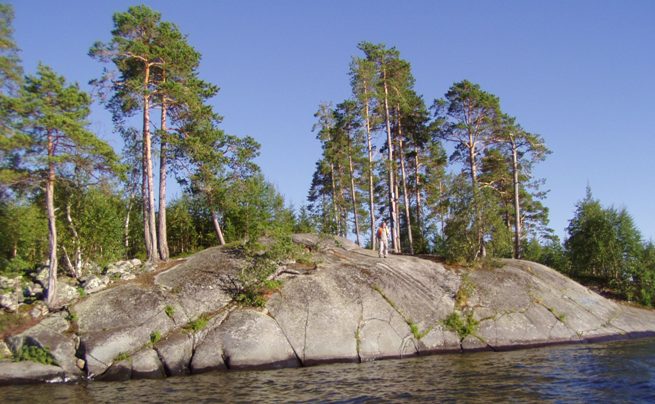
Ukrainian Ice Age
Deep philosophical discourse about fresh-frozen mammoths, burshtyn and Ukrainian black earth
2019-07-06 06:53
Ideas that are the subject of this presentation, I brought a series of travels in Karelia and the Kola Peninsula, which I accomplished from 2001 to 2012. And also from a trip to Norway and Sweden in the summer of 2016 and 2018 years.
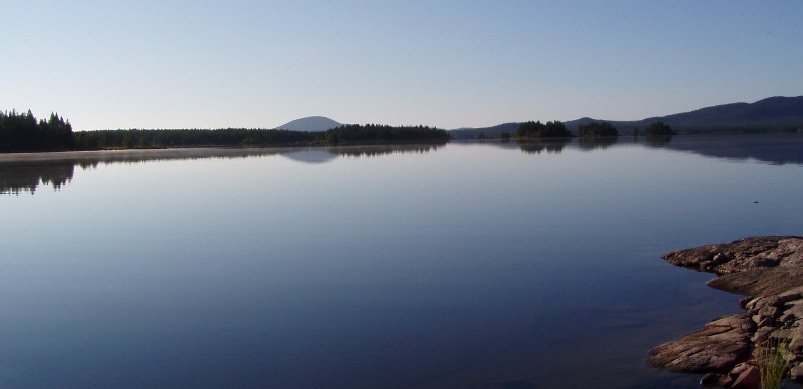
The impetus to the reasoning on this topic was the unusual reliefs of Karelia, which I proceeded almost all up and down. Or rather from west to east. It is in this direction that most Karelian rivers flow: from the Finnish border to the White Sea.
Specifically, in the reliefs of Karelia, the Kola Peninsula and Scandinavia, I was struck by the abundance of "lamb foreheads" (smooth rocks) - so in the mountains they call rocks smoothly licked by glaciers. But the mountainous "lamb foreheads" and they are found only in the glacier's bed, where the ice touches the coastal rocks, and polishes them for centuries, making its endless and quite logical movement from the mountain peaks to the lower reaches.
In the north of Europe in Scandinavia and on the Kola Peninsula, all mountains, rocks and large stones have traces of glacial friction.
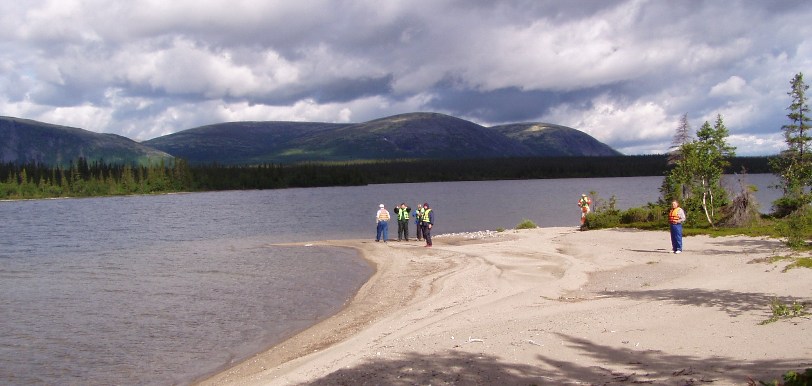
But if in the mountains the physics of the formation of "lamb foreheads" (smooth rocks) is quite understandable and well studied by glaciologists, then the mechanisms that led to the formation of smooth rocks on the endless expanses of Karelia and the Scandinavian Peninsula are not at all obvious.
There is no glacier feeding zone capable of generating large streams of ice. There are no large elevations that can set these glaciers in motion. And most importantly, there are no heaps of rock destruction products - moraine shafts - inevitably arising from the friction of ice on rocks.

To better understand the riddle of the smooth rock in the north, let's briefly consider how glaciers live and work in the mountains.
Basics of mountain glaciology
Mountain glaciers are not formed as a result of freezing of water, which in the liquid state at these altitudes does not occur at all, but as a result of compaction of snow under the pressure of its own weight. Accumulating on steep mountain slopes, the snow begins to thicken, turning into firn. This is such a very dense snow with its granular structure and white color resembling lumpy sugar.
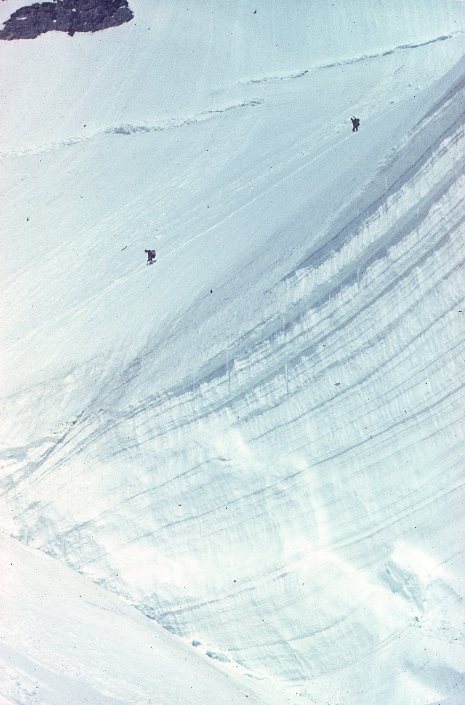
Sliding down the mountain slopes and continuing to thicken further, the firn turns into mountain ice. And since ice is much denser and heavier than firn, the glacier breaks away from firn fields, and a piedmont crack forms at the place of separation - bergschrund.
But in the mountains the process of snow falling and turning it into firn never stops. Soon the next piece of "almost ice" comes off the firn fields, the glacier catches up with it, and merges with it into a single whole.
This is how the glacier feeding zone works.
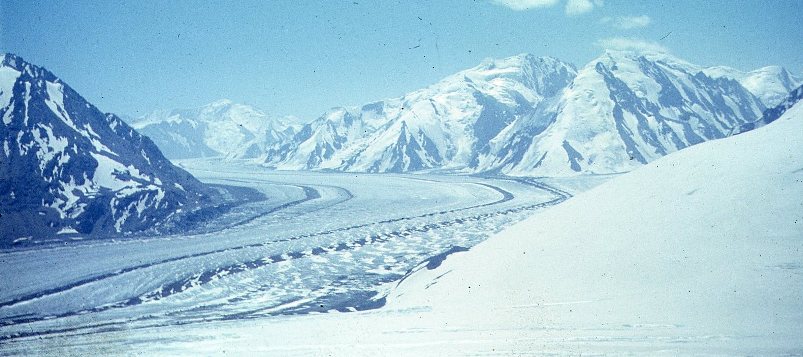
Then the ice, which has natural plasticity, literally flows down from the mountain slopes, repeating turns and excesses of its bed. The glacier is moving very slowly - a few centimeters per day, but having a huge mass, it has been rubbing against rocks for centuries, polishing them to the state of "lamb foreheads" (smooth rocks).
In addition, the multi-kilometer "conveyor belt" the glacier carries on the moraine ridges formed from stones that fell on the glacier during its movement.
Here it is important to note two more points: the glacier polishes only the rocks of the bottom of its bed and its shore to the thickness of the ice. Above the surface of the glacier rocks have my own natural appearance. Secondly, on the shores of the glacial bed in the lower part of the glacier current, huge amounts of products of its vital activity are accumulated - the so-called moraine deposits or moraines. This is all that the glacier brought on itself from the mountains. This conglomerate, consisting of sand and stones, forms huge shafts, sometimes several hundred meters high.
Descending lower and lower, the glacier begins to melt, turns into water, and flows into the foothill plains in stormy rivers, so that there, evaporating to ascend to the sky, and return to the slopes of the mountains with fresh snow.
As a result of this endless water cycle, products of monotonous labor of mountain glaciers remain: polished rocks "lamb foreheads" (smooth rock) and megatonic moraine dumps of rock destruction products.
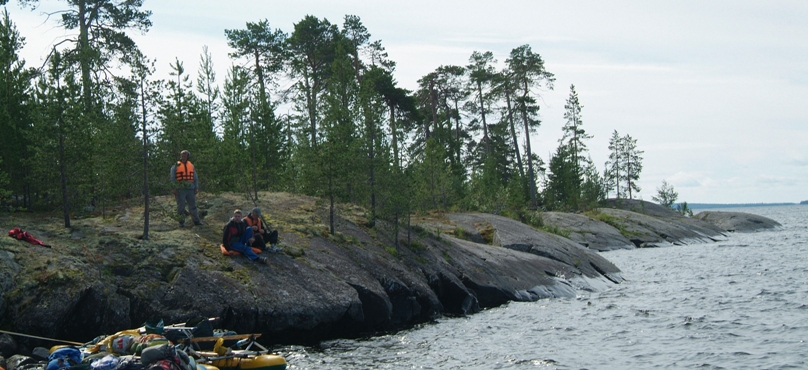
Returning to the northern smooth rocks
I continued my search for an answer to the questions about the origin of the smooth rocks in the european north.
I was looking for answers to 3 questions:
-
1. How did glaciers arise that polished the northern rocks?
-
2. What forces were moving these glaciers?
-
3. Where the products of rock destruction by glaciers disappeared?
In the summer of 2012, we once again crossed the huge Tiksheozero, located in the north of Karelia, on an inflatable catamaran. We walked across the lake from south to north and were guided by the sloping back of Ivan Mountain, towering over the forest somewhere ahead on the banks of the Vinca River.
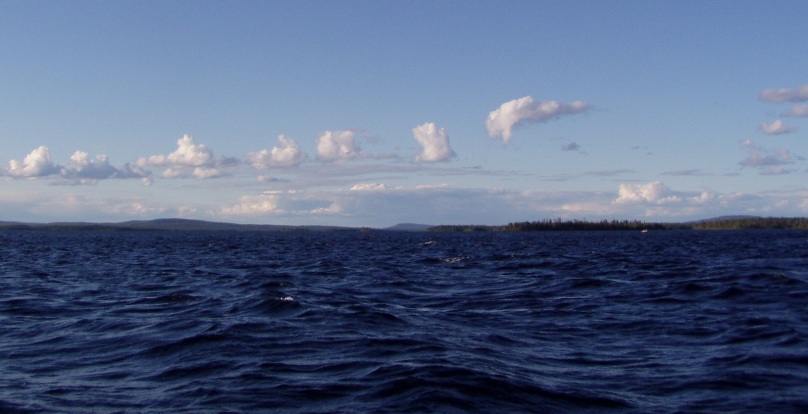
I admired the surrounding nature, and once again mentally argued about why Ivan Mountain was so rounded.
And then it dawned on me! I immediately found specific answers to all three questions.
The fact is that the glaciers here did not move slowly over the rocks for centuries, leaving mountains of moraine deposits.
A huge mass of ice from the Arctic Ocean swept here once (or maybe not once) at the speed of mountain avalanche. This ice in a few minutes erased the mountains in the sand and fine dust, which were spread by the glacier along the entire path of its movement right up to the Ukrainian Polesye.
Thus, in a few minutes, a giant ice avalanche did work on the transformation of rocks that mountain glaciers have been making for centuries.
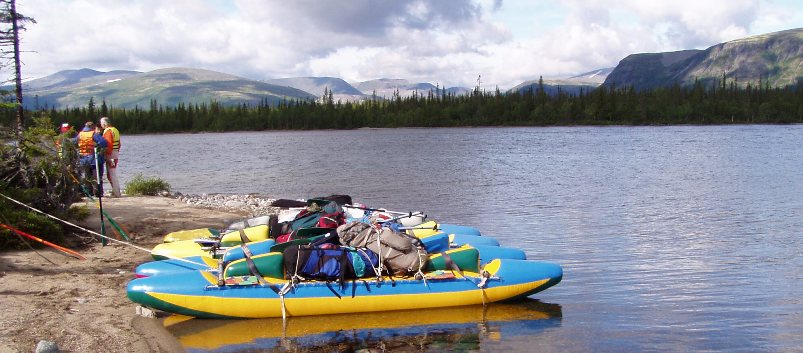
The giant ice bulldozer polished hard rocks of the Kola Peninsula and Karelia, he grabbed everything alive and not alive from the surface of the earth, and stopped, pushing it all in front of him, approximately along the line of the Pripyat River in the territory of modern Ukraine.
I understood where the ice came from, and where did the products of rock destruction go. As is known, there is no continent under the ice of the Arctic Ocean; these ice floats freely on the surface of the water.
Of course, in order to set such a mass of ice in motion, very large forces are needed, but much less than the forces that need to be expended to move the ice lying on the mainland.
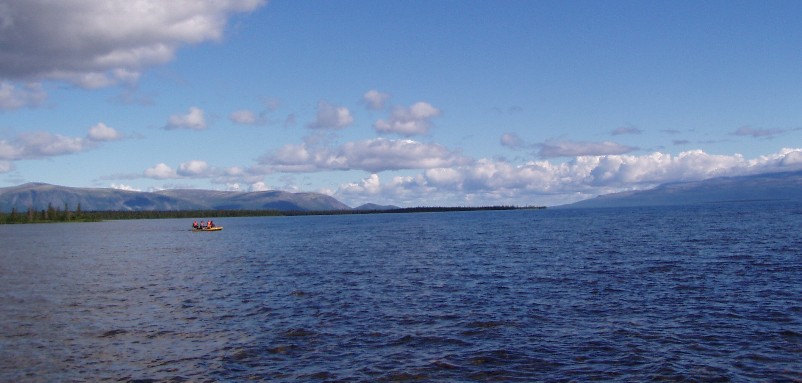
The source of such forces could be the tectonic movements of the Earth's crust – earthquakes and giant tsunamis caused by them, it is also impossible to rule out the fall of large bodies of space origin of meteorites, comets or asteroids.
The soil and vegetation torn from the surface of the earth and brought by a glacier to the territory of modern Ukraine has rotted away and subsequently formed the famous Ukrainian black soil. And the abundance of remains of coniferous trees in glacial dumps allowed Ukrainian amber - burshtyn - to be formed in large quantities.
I think that the reasons for the formation of deposits of coal, rock salt and many other minerals in Ukraine should be sought in the activities of ancient glaciers.
Of course, in order to obtain confirmation of such hypotheses, careful research and modeling of processes are required, but the logic of my assumption makes it possible to clearly explain some quite scientific facts that still lie in the "riddle of nature" or "paradoxes of history" section.
Frozen Mammoths
In 1900, in the valley of the Berezovka River, a right-hand tributary of the Kolyma River, the body of a mammoth was well preserved in the permafrost, was found. By itself, this fact does not constitute a riddle of nature: in the permafrost, the find was kept frozen and could be saved undamaged for many tens and hundreds of thousands of years.
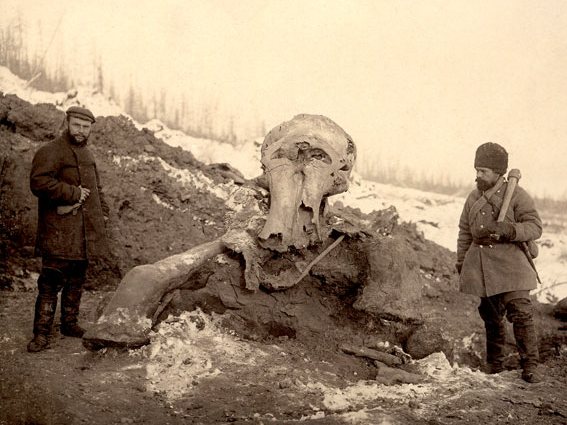
Mysteriously here is what: in the mouth of the found mammoth remains of not chewed grass. The condition of the stems and seeds of this vegetation indicate that death overtook a gigantic prehistoric animal at the end of summer. And this mammoth died obviously not from hunger.
And this is where the mysteries of nature is begining:
-
1. If the mammoth died unexpectedly in the warm season, why it was not eaten by prehistoric predators or did not decompose, as it should be in summer?
-
2. How did the body of a mammoth plunge into permafrost?
But everything falls into place, if we assume that the Berezovsky mammoth was hit by an ice avalanche flying from the north, and instantly frozen under a gigantic layer of polar ice. Over time, under a thick ice sheet, the earth froze and permafrost formed, ensuring the safety of the mammoth remains after the glaciers melted.
And the fact that the mammoth was probably knocked down is indicated by the strange posture in which it was found - lying on its stomach, as well as fractures of the pelvis and shoulder of the animal.
Of course, such a simple and logical explanation for the origin of the northern "lamb foreheads" (smooth rocks), burshtyn (Ukrainian amber) and chernozem, as well as frozen mammoths, is not an exhaustive proof of the throws of the northern glaciers to the south. But these clues inspire the search for new evidence, which I will write in the following material.
The essence of my hypothesis
In conclusion, I want to once again focus on the essence of my assumption:
-
1. Glaciers of the Arctic Ocean do not have a continent under them and float freely on the surface of the water.
-
2. Under the influence of earthquakes, tsunamis or strikes of cosmic bodies on the Earth, the northern ice could quickly move towards the equator.
-
3. Such cataclysms not once changed the landscapes and climate of the Earth, and also killed all life (or almost all life) in its path.
A look from these positions on the history of the development of nature and life on the planet Earth allows us to reflect on many processes, phenomena, events and facts of the history of our planet in a new way, and to build a more complete reconstruction of the universe. In the following publications, I plan to talk about the emergence of ocean currents, the construction of huge pyramids in Africa and America, the aliens from space and many other interesting things.
And frozen mammoths are just one of the illustrations of how things can be simply explained, based on correct assumptions and guided by healthy logic.
Каждый ваш вклад имеет большое значение. Поддержите независимые научные исследования автора и помогите более глубоко изучать важные темы сегодняшнего дня
Пополнить банку на независимые научные исследования
Author: Сергей Просветов
Просмотров всего: 83793 Просмотров сегодня: 206

Law of Ukraine On Strengthened Protection of Property of Mass Media, Publishing Houses, Book Stores, Book Distribution Enterprises and Creative Unions of 20.05.2010 № 2274-VI
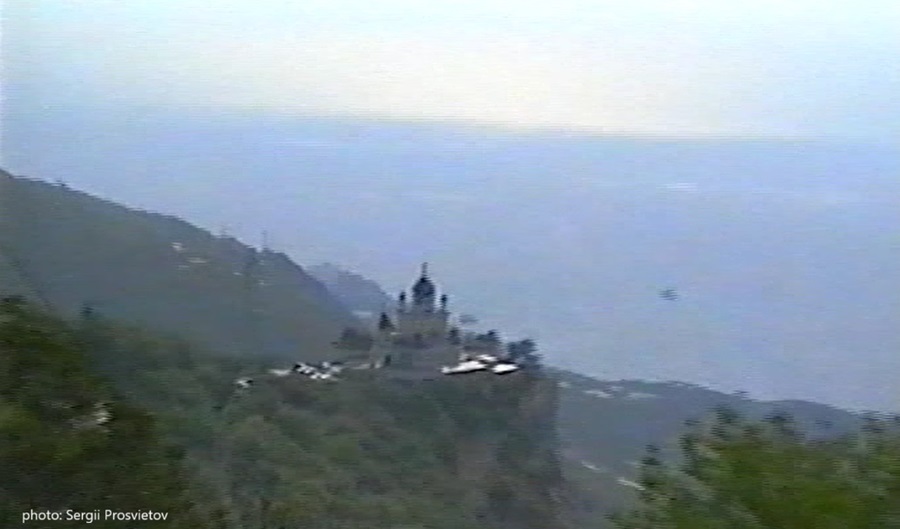
Why did the Soviet Union collapse?